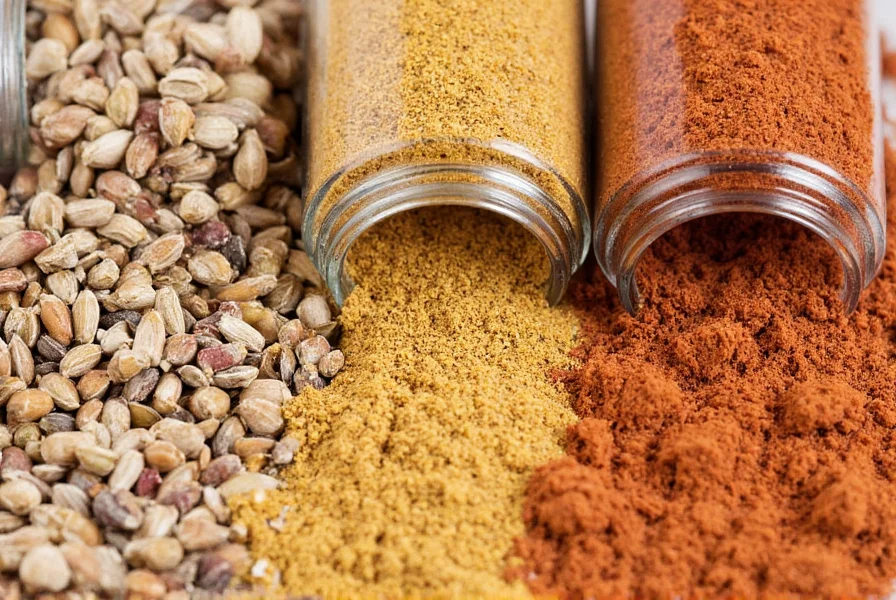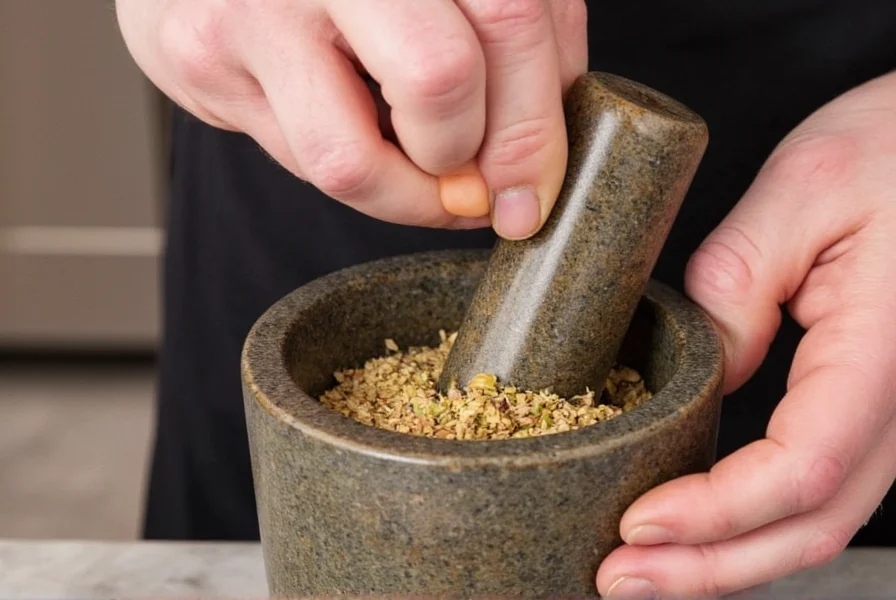When you're in the middle of cooking and realize you've run out of ground coriander, knowing reliable alternatives can save your recipe. This essential spice brings a distinctive citrusy, slightly sweet, and earthy flavor to dishes across Indian, Middle Eastern, and Latin American cuisines. Understanding what makes coriander unique helps you select the most appropriate substitute without compromising your dish's integrity.
Understanding Coriander's Unique Flavor Profile
Ground coriander comes from dried coriander seeds (the fruit of the cilantro plant) and offers a complex flavor profile that's difficult to replicate exactly. Unlike fresh cilantro leaves, the seeds provide warm, nutty, and citrus-forward notes with subtle floral undertones. This versatility makes it a staple in spice blends like garam masala, curry powders, and berbere.
When seeking a substitute for ground coriander, consider both the flavor characteristics and the role it plays in your specific recipe. In marinades, it tenderizes proteins while adding depth. In baked goods, it provides subtle warmth. In stews and curries, it creates a flavor foundation that complements other spices.
Top 5 Substitutes for Ground Coriander
| Substitute | Substitution Ratio | Best For | Flavor Difference |
|---|---|---|---|
| Cumin | 3/4 tsp cumin = 1 tsp coriander | Mexican, Middle Eastern dishes | Earthier, more intense, less citrus |
| Whole coriander seeds (freshly ground) | 1:1 ratio | All applications | Nearly identical when freshly ground |
| Garam masala | 1/2 tsp garam masala = 1 tsp coriander | Indian curries, stews | Warmer, more complex spice blend |
| Cardamom | 1/4 tsp cardamom = 1 tsp coriander | Indian sweets, rice dishes | Sweeter, more floral, less earthy |
| Fennel seeds | 3/4 tsp fennel = 1 tsp coriander | Mediterranean recipes | Sweeter, more anise-like flavor |
How to Choose the Right Substitute for Your Recipe
Selecting the best ground coriander alternative depends on your specific dish and available ingredients. Consider these factors when making your decision:
By Cuisine Type
Indian cooking: Garam masala provides the closest approximation in curries and dals, though you'll want to reduce other spices in the blend. For biryanis and rice dishes, a small amount of cardamom works surprisingly well.
Middle Eastern recipes: Cumin is your best bet for dishes like falafel, hummus, and meat rubs. The earthy profile complements tahini and lemon flavors common in this cuisine.
Mexican/Latin American: A combination of cumin and a pinch of oregano mimics coriander's role in adobo blends and chili powders. For fresh salsas, consider adding a squeeze of lime to compensate for coriander's citrus notes.

Creating Your Own Coriander Substitute Blend
For the most versatile ground coriander alternative, create a custom blend that captures its complex flavor profile:
- Basic Blend: 1/2 tsp cumin + 1/4 tsp cardamom + 1/4 tsp fennel seeds (grind together)
- For Curries: 1/2 tsp cumin + 1/4 tsp turmeric + 1/4 tsp ginger powder
- For Baking: 1/2 tsp fennel seeds + 1/4 tsp allspice + 1/4 tsp cinnamon
Store any extra blend in an airtight container away from light for up to 3 months. Freshly grinding whole spices just before mixing ensures maximum flavor retention for your coriander powder alternative.
Common Substitution Mistakes to Avoid
Many home cooks make these critical errors when replacing ground coriander:
- Using cilantro leaves as substitute: Fresh cilantro has a completely different flavor profile and won't provide the warm, earthy notes of ground coriander seeds.
- Incorrect ratios: Coriander has a relatively mild flavor compared to spices like cumin. Using equal amounts of stronger spices will overwhelm your dish.
- Ignoring recipe context: The same substitute might work in a stew but ruin a delicate sauce. Consider how the spice functions in your specific preparation.
- Adding too late: Like coriander, most substitutes need time to bloom in oil or integrate into the dish. Add them early in the cooking process.

When You Absolutely Need Coriander
While substitutes work in many situations, certain recipes truly require authentic ground coriander. Traditional Indian dhania jeera powder, certain Middle Eastern baharat blends, and specific pickling recipes rely on coriander's unique chemical compounds that substitutes can't fully replicate. In these cases, consider these practical solutions:
- Check if you have whole coriander seeds you can freshly grind
- Ask a neighbor or nearby friend who cooks similar cuisine
- Adjust your recipe to work with available spices rather than forcing a substitution
- Order whole seeds online for future use (they retain flavor longer than pre-ground)
Expert Tips for Successful Substitution
Professional chefs recommend these techniques when replacing ground coriander:
- Taste as you go: Add substitute spices incrementally, tasting after each addition
- Consider the dish's cooking time: Longer cooking allows stronger substitutes like cumin to mellow
- Bloom in oil: Heat substitutes in cooking oil for 30 seconds before adding other ingredients
- Balance with acid: A squeeze of lemon or lime can help mimic coriander's citrus notes
- Adjust other spices: Reduce complementary spices like cumin or turmeric when using substitutes










 浙公网安备
33010002000092号
浙公网安备
33010002000092号 浙B2-20120091-4
浙B2-20120091-4